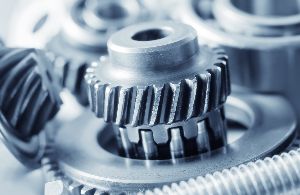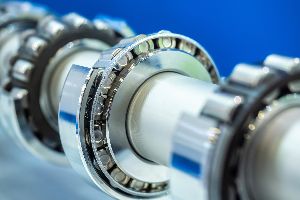A Guide to Proper Lubrication for Industrial Electric Motors

The condition of major components in industrial settings can have an enormous impact on functionality and performance. In particular, either ball or roller bearings are used in the majority of electric motors. Because they play a vital role in supporting radial and axial loads or belted applications, it’s important to confirm they are sufficiently lubricated during electric motor maintenance. Here’s what you need to know.
What Role Does Lubrication Play in Motor Health?

Minimizing friction is vital for protecting the integrity of electric motors. Without lubricant, metal comes into direct contact with another metal and can have a harsh effect on both parts when they’re in motion, contributing to uneven wear and premature failure.
Lubrication reduces the strain between these moving parts by creating a protective, oily film barrier. It also prevents the surface finishes from corroding when they’re idle, reducing the chances of premature breakdowns. Proper lubrication can even protect the motor from damage when it’s exposed to environmental stressors, like excess heat, which can cause the lubricant to oxidize faster.
What Type of Grease Is Best for the Job?
It’s crucial to use the appropriate type of lubricating grease. The greasy barrier that separates the moving parts is known as film thickness. When that film is too thin, it encourages greater contact between metals. When it’s too thick, the parts need to churn through that viscosity as they move. This effect, known as lubricant churning, causes the parts to work much harder than usual.
During electric motor maintenance, several factors must be considered to determine the right formula and thickness. Among the most important is the ambient temperature; this refers to the temperature of the motor’s surroundings. The standard in the electric motor industry is 40°C; in most situations, this is suitable for the average industrial application. But in instances where the ambient temperature might exceed 40°C, the grease used to protect the bearings must resist oxidation.

Another key factor is the load level. Different formulas can support varying weights. For example, barium complex grease is highly regarded for its ability to efficiently handle heavy loads, while lithium grease can withstand shock loads more effectively. All lubricants have different characteristics that impact how well they’ll prevent friction based on the weight of the mechanical load.
Grease choice is also affected by speed. The faster a motor runs, the higher the temperature of the bearings. That causes the lubricant to break down much more quickly than it would in an application running at lower revolutions per minute (RPM). During electric motor maintenance, focus on selecting a lubricant that’s tolerant of this possible spike. Lithium grease handles extreme temperatures well, for example, while calcium grease is more suitable for use in cooler settings.
Finally, consider the size and type of the bearing. A larger bearing, such as a seal or a shield, generally calls for more lubricant during its life span. By contrast, the grease used to lubricate smaller bearings, like thrusts, rollers, and balls, does not last as long. It’s helpful to select a formula that offers properties like water resistance and protection from temperature extremes.
How Are Motor Lubricants Formulated?

Lubricants begin with either a mineral, vegetable, or synthetic base oil. A synthetic base is often favored for its resistance to varying temperatures and weather conditions, as well as its performance. Additives are used to elevate the quality of the blend. Some slow oxidation, while others inhibit rust and corrosion. Some materials are designed to protect against premature wear and tear. Most grease is also formulated with dye or pigment.
A thickening agent is used to stabilize the lubricant and help the substance bond more efficiently to the motor. Most of these are compounds containing sodium, calcium, or lithium, but there are non-soap versions that rely on polyurea or clay to provide a richer consistency. That grade is rated by the National Lubricating Grease Institute (NLGI). A lower rating of 000 denotes a fluid consistency, while a grade 2 is normal and a grade 6 is hard.
Generally, bearing manufacturers provide a recommendation about the most suitable type of lubricant to use. It’s important not to use another formula during electric motor maintenance, as these may have a different grade or viscosity than what is advisable. That can affect performance and hinder motor quality.
The mechanics at Hayden Electric Motors Inc. are committed to ensuring that your motor always runs efficiently. Serving clients throughout Alaska, they’re proud to be a part of the Electrical Apparatus Service Association® and are committed to standards as established by the National Electrical Manufacturers Association® and the American Bearing Manufacturers Association®. In addition to electric motor maintenance, they offer repair services and carry an extensive selection of motors if you need a replacement. Visit the website to learn more about these services, or call (907) 561-1073 to speak with a representative.
About the Business
Have a question? Ask the experts!
Send your question

